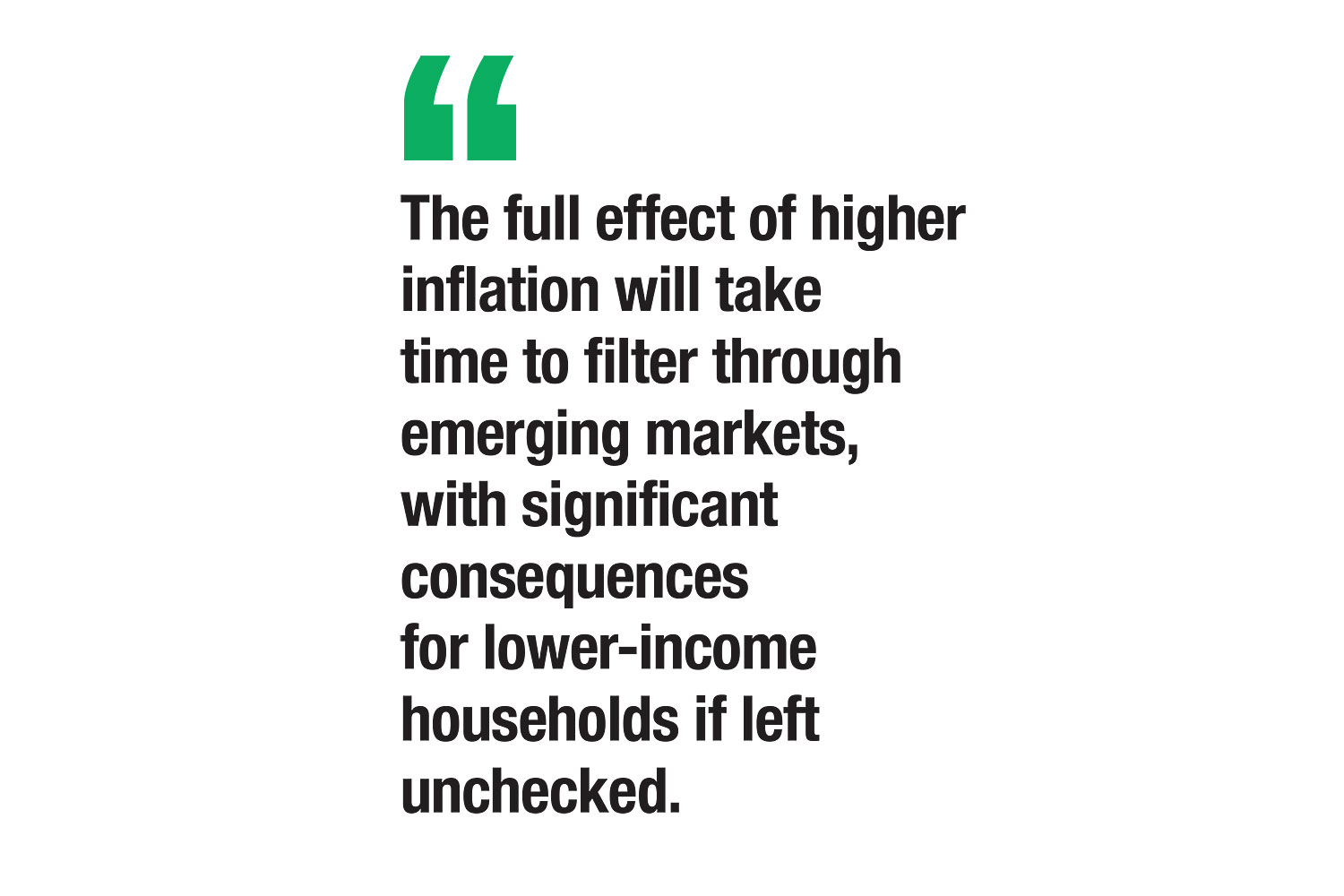Thailand: Emerging markets down but not out
The inflation genie is out of the bottle and is a multi-layered challenge for policymakers. Rising energy, food and wage costs are combining to raise inflation expectations, which if left unchecked could destabilise the global economy.
Our base case for emerging markets (EM) is built on the reality they entered this current downturn in better health than in prior cycles. Corporate leverage is lower, financial sector and other reforms have been implemented, and most policymakers are pursuing orthodox monetary and fiscal policies to address challenges. Nonetheless, we acknowledge that the range and probability of alternative scenarios has increased.
Earnings picture: In contrast to some other market observers expecting a contraction in EM earnings in 2023, at the start of this year we highlighted the likelihood of a recovery driven by India and China. China’s flexible policy response and India’s resilient GDP outlook mean that a recovery remains our base case.
China’s transition to a dynamic zero-Covid policy signals an easing of some, but not all, the risks associated with its management of the virus. Factories are reopening, port bottlenecks are easing, and there are signs that supply chain disruptions are diminishing.
We expect China’s stance in managing the virus will remain in place through the 20th Party Congress in the fall, where President Xi Jinping is expected to be confirmed for a third term.
Inflation challenges: Emerging market inflation, driven by rising energy, food and wage costs, has created challenges for policymakers. In the past, subsidies have been used to limit the squeeze on incomes from rising prices of necessities. In the current cycle, direct transfers are the preferred policy tool.
The full effect of higher inflation will take time to filter through EMs, with significant consequences for lower-income households if left unchecked.
There are similarities between the rise in inflation in 2008 and today. Oil prices peaked at US$145 a barrel in July 2008, pushing transport and fertiliser prices higher, which combined with supply challenges to increase global food prices. This had a greater effect on inflation in emerging markets than in developed markets due to the higher weight of food in the EM inflation basket.
Rising oil prices are once again pushing up transport and fertiliser prices, and war is disrupting the supply of grain and oil seeds. Policymakers in Asia are responding with export bans in Malaysia, Indonesia and India, and there are discussions about the formation of a de-facto rice export cartel in Thailand and Vietnam.
Similar measures were ineffective in 2008 and are unlikely to work in 2022 (Indonesia has already rolled back its palm oil export ban and this week scrapped its export levy). Grain stocks in storage are high, but the challenge is that much of this is trapped in Ukraine. This puts the focus on policymakers to find a solution to prevent a global food-price shock from following the energy-price shock.
New realities: EM central banks moved to raise interest rates ahead of their developed-market peers to address price pressures stemming from excess demand. The Brazilian central bank first raised its benchmark in March 2021. India, Poland and others have followed suit. Chinese policymakers were also prudent in curbing excess demand early, creating room for policy easing to stimulate growth now.
EM equity market valuations have declined in line with a correction in global markets. New-economy sectors, including technology and communication services, have led the retreat. Conversely, traditional sectors, including financials and industrials, have witnessed relative outperformance.
Investors’ flight to safety away from EMs towards the relative safety of US dollar-based assets is a phenomenon we have witnessed in prior cycles. Nevertheless, markets have recognised the new reality, as reflected in the unusually low level of volatility in EM currencies relative to developed markets, and EM equity market outperformance in 2022.
Portfolio actions: We have rebalanced our portfolios towards companies that we believe will benefit from rising inflation and higher interest rates. We are particularly focused on those markets that are better prepared in terms of policy flexibility as well as those with a plentiful supply of labour, which we believe are in a better position to manage a further inflation shock.
The core pillars of our portfolios remain focused on new-economy secular themes, including demographics, digitisation and premiumisation.
Emerging markets are facing a difficult period, but we continue to believe in their long-term growth potential. More effective monetary and fiscal policies as well as improving governance translates into an improved outlook for investors. In our view, these new realities mean that as emerging markets exit this current downturn, they are better positioned to capture the upside to growth.
Source: https://www.bangkokpost.com/business/2349003/emerging-markets-down-but-not-out


 English
English




